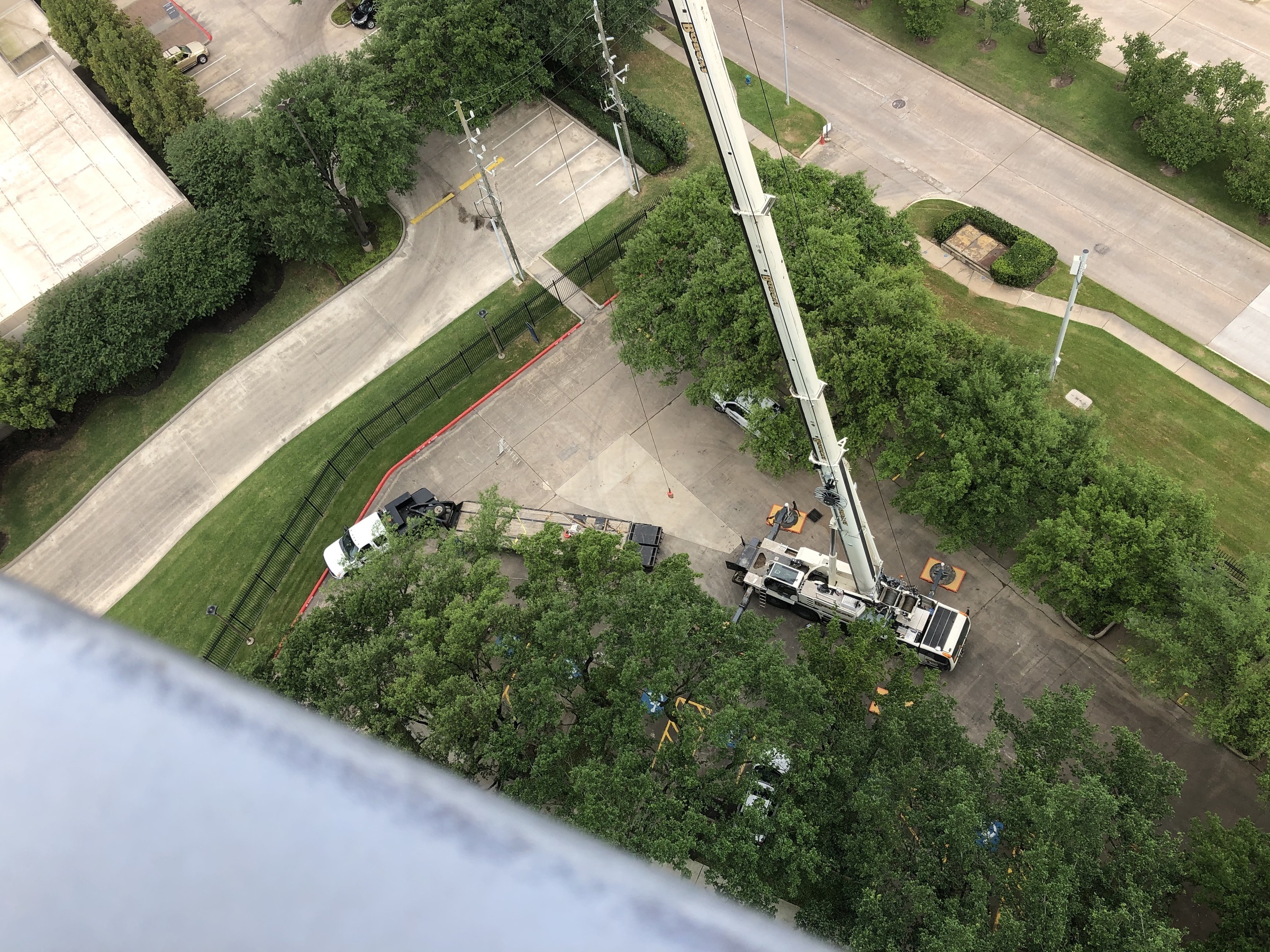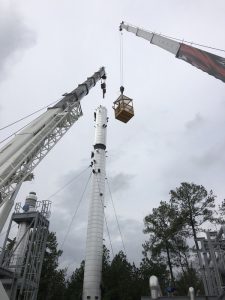Flexibility is the cornerstone of productivity in both construction and agriculture. A standout piece of machinery that embodies this principle is the telehandler. Also called a telescopic handler, this machine has transformed the way we lift, move, and position heavy objects across various industries. In this guide, Bobcat Contracting LLC, a crane rental company based in Texas, walks you through everything you need to know about telehandlers, including their capabilities and why they've become indispensable on job sites. A telehandler, short for telescopic handler, is a multi-functional piece of heavy equipment that combines the lifting power of a forklift with the extended reach of a crane. Its defining feature is a telescoping boom that can extend and retract, providing superior vertical and horizontal reach. These machines go by many names in the industry, such as telescopic forklift, lull, teleporter, reach forklift, and zoom boom. Telehandlers have firmly established themselves as a key component in construction, agriculture, waste management, and recycling operations. The core part of the machine is its telescopic boom, which is an extendable arm that gives the telehandler its reach and lifting capacity. The operator controls the machine from a cab that is typically designed for optimal visibility. The chassis serves as the base of the telehandler and is often built for stability on rough terrain. At the end of the boom, there's an attachment point that allows for numerous tools to be fitted. Larger models may also include stabilizers to provide extra support during heavy lifts. Here are some of the primary uses and applications of telehandlers: Lifting and Moving Telehandlers excel at transporting heavy loads across construction sites and agricultural settings. They can lift and move: Accessing Hard-to-Reach Areas Thanks to their extendable booms, telehandlers can reach places that standard forklifts can't. This makes them perfect for: Performance on Uneven Ground Telehandlers are engineered to function well on rugged terrain. This makes them invaluable on: Versatility Through Attachments One of the telehandler's biggest advantages is its adaptability through various attachments. Common attachments include: This flexibility enables a single machine to perform the roles of multiple pieces of equipment, conserving time and resources on job sites. Telehandlers come in a variety of sizes to accommodate different job demands: When choosing a telehandler, it's crucial to consider both the weight of the loads you'll be lifting and the height you need to reach. Remember that the maximum lift capacity usually decreases as the boom extends. Operating a telehandler requires expertise and proper training. Given their complexity and potential risks, safety must always remain a top priority. Operators should conduct daily equipment checks prior to use and stay mindful of the telehandler's load capacity, avoiding overloading. Understanding how the load capacity changes with boom extension is critical for safe operation. Ground conditions and stability are also vital considerations, as is maintaining clear visibility at all times. In situations where visibility may be limited, employing spotters can significantly enhance safety. Ultimately, thorough training and certification for all operators is not only advisable but essential. At first glance, telehandlers and forklifts might appear similar, but they serve distinct purposes. Telehandlers offer superior reach and lifting height and can operate on rough terrain, making them ideal for outdoor use and large construction sites. Their versatility via multiple attachments is unparalleled. In contrast, forklifts are more compact and agile in tight spaces, making them suited for warehouse and indoor use. They typically have a higher lifting capacity at full extension and are more fuel-efficient for continuous operation in fixed locations. Choosing the appropriate telehandler depends on several factors. You'll need to consider the maximum load weight you intend to lift, the highest elevation you need to reach, and the type of terrain you'll be working on. The tasks and attachments required, whether you'll be working indoors or outdoors, and the frequency and duration of use are all important considerations. By evaluating these factors, you can ensure that you select a telehandler that meets your project's requirements efficiently and safely. As technology evolves, so do telehandlers. The industry is witnessing advancements such as electric and hybrid models for reduced emissions, enhanced safety features like object detection systems, and better telematics for fleet management and maintenance scheduling. There's also a growing trend toward increased automation and remote operation. These innovations promise to make telehandlers even more efficient, safe, and versatile in the future. If you're in Texas and seeking telehandler and crane rental services, Bobcat Contracting LLC is here to assist. Our fleet of modern cranes and experienced operators can handle projects of any scale. Reach out to us today for a free quote and let us help you elevate your project to new heights. With Bobcat Contracting LLC, you're partnering with professionals who understand your needs and are dedicated to your project's success.
Galvanized Steel Sheet & Plates, are intended for use where greater corrosion protection is required without painting. A lower cost alternative to stainless steel, galvanized sheet and plates have a rust free protection for up to 30 years, while maintaining strength with a durable surface coating. Our company stocks many sizes in precut sizes, full mill sizes or we can hot dip virtually any size and quantity required for your welding or construction project.
Galvanized steel Sheet coil has a light weight, beautiful and good anti-corrosion performance, can be directly processed. Is mainly used in construction, shipbuilding, automobile manufacturing, machinery manufacturing, furniture home appliance industry, electrical and automation industry. Efficient construction, save energy and protectenvironment, prevent pollution etc.
Hot-dip Galvanized Steel Sheet Galvanized Sheet,Galvanised Corrugated Steel Sheet,Galvanised Steel Coil Tianjin YF Steel Co., Ltd , https://www.youfametal.comWhat Is a Telehandler?
The Components of a Telehandler
The Capabilities and Applications of Telehandlers
Sizes and Lifting Capacities of Telehandlers
Safety and Training Considerations
Distinguishing Telehandlers from Forklifts
Selecting the Right Telehandler for Your Project
The Future of Telehandlers
Contact Bobcat Contracting LLC for a Free Crane Rental Quote in Texas!
Hot-dip galvanized sheet is made by immersing the steel sheet in a molten zinc bath at about 500 °C to attach a zinc layer to the surface. This is the continuous galvanizing process. It will form a protective zinc layer on the surface so that it has good paint adhesion and weldability. It is the most widely used and cost-effective method to prolong the service life of steel sheets.
Electro-galvanized Steel Sheet
Electro-galvanizing, also known as cold galvanizing, uses electrolysis to form a uniform and dense layer on the surface of the metal. The anti-corrosion zinc layer can protect steel parts from oxidation corrosion. Also, it can meet decorative purposes. But the zinc layer of the electro-galvanizing steel sheet is only 5-30 g/m2. So its corrosion resistance is not as good as hot-dip galvanized sheets.

